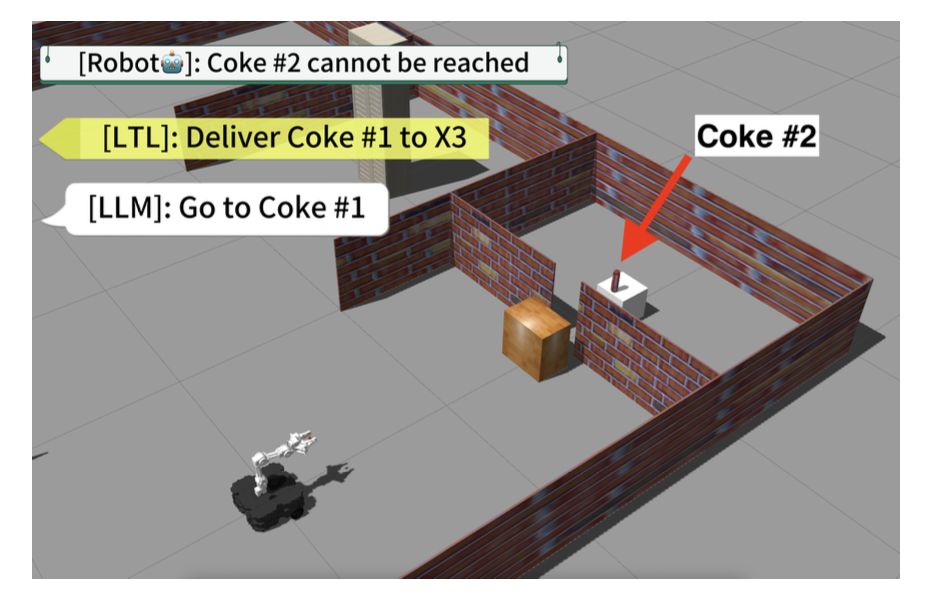[TOC]
- Title: Conformal Temporal Logic Planning Using Llm 2023
- Author: Jun Wang et. al.
- Publish Year: 19 Dec, 2023
- Review Date: Sun, Jan 21, 2024
- url: arXiv:2309.10092v2
Summary of paper

Motivation
- Unlike previous methods that focus on low-level system configurations, this approach focuses on NL-based atomic propositions.
- now the LTL tasks are defined over NL-based atomic propositions
- Robots are required to perform high-level sub tasks specified in natural language.
- To formally define the overarching mission, they leverage LTL defined over atomic predicates modelling these NL-based sub-tasks.
Contribution
- To address the challenge of ensuring the correctness of robot plans with respect to these LTL-encoded tasks, the authors propose HERACLEs, a hierarchical conformal natural language planner. HERACLEs employs automata theory to determine the next NL-specified sub-tasks for mission progress, employs Large Language Models to design robot plans to fulfill these sub-tasks, and uses conformal prediction to assess the probabilistic correctness of the plans, deciding whether external assistance is needed. The paper provides theoretical probabilistic guarantees for mission satisfaction and presents extensive comparative experiments on mobile manipulation tasks.
Some key terms
Limitation for previous work
-
motion planning can generate paths satisfying LTL tasks
- but LTL formula require experts to create
-
Natural Language (NL) has also been explored as a more user-friendly means to specify robot missions; however, NL-specified tasks may be characterized by ambiguity.
- algorithms for NL based task cannot guarantee correctness
Specifying robot tasks that combines both LTL and NL
- tasked with performing multiple high-level semantic sub-tasks (e.g., ’deliver a bottle of water to the table’) within their environments in a temporal and logical order.
- now the atomic predicate bind with natural language described task, which are longer and more vague.
Structure
- LTL planner decide which sub tasks to do next
- LLM planner determine how to transit from sub task t to sub task t+1
- For instance, an LLM response to the task ‘bring me a bottle of water’ may be “I need to go to the store and purchase a bottle of water’.
Summarize
- they use LLM as sub task planner

Potential future work
- we may want to use their environment as their environment contains complex temporal logic.
